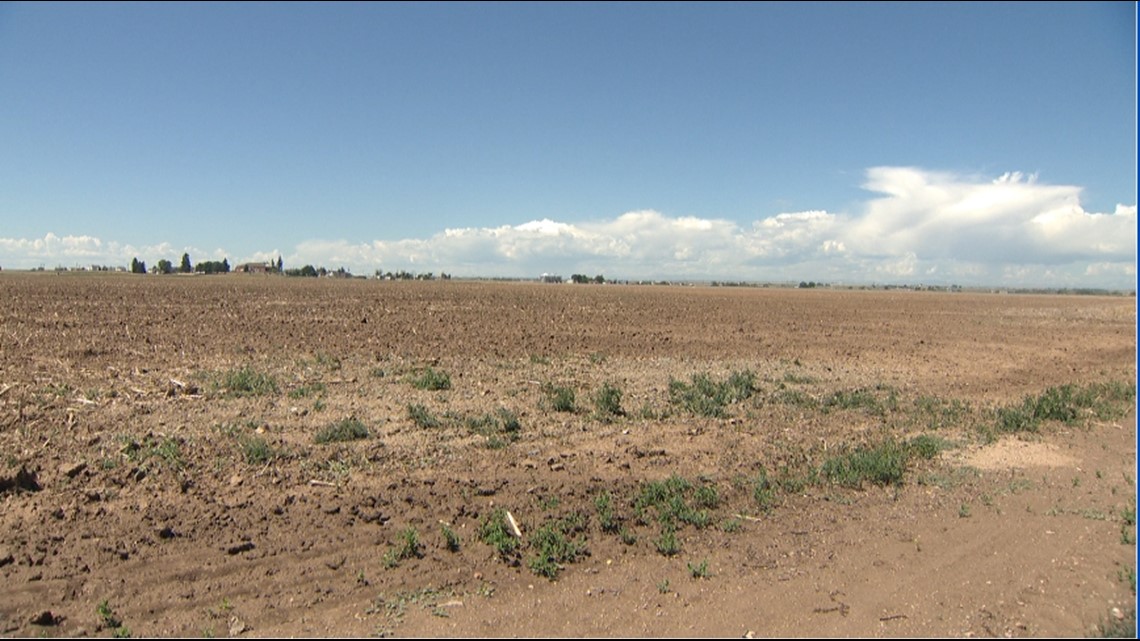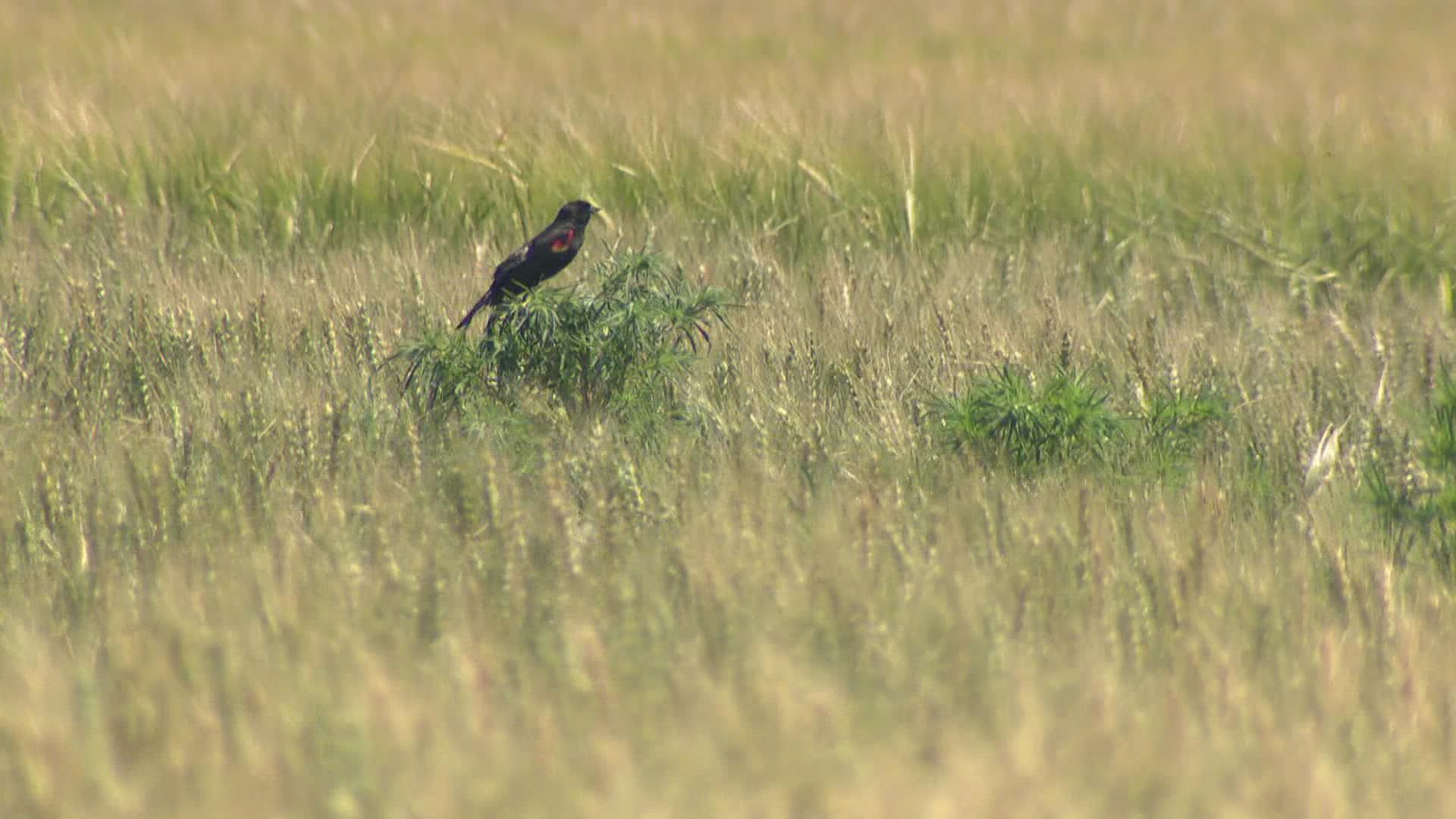KEENESBURG, Colo. — Drought and high temperatures are hurting this year's wheat crop. Nearly half of Colorado's wheat is rated as "poor" or "very poor," according to the U.S. Department of Agriculture.
"Just too much heat, too much dry conditions, and way too much wind," said Marc Arnusch, president and CEO of Marc Arnusch Farms. "We just didn’t get any kind of snowpack. We didn’t get any kind of moisture through the winter and subsequently our wheat is showing it.”
Two years ago, his farm saw its best wheat crop ever.
This year, it's a completely different story.
"We are sitting on easily the worst wheat crop my family has ever grown," he said. "That's not necessarily something you want to be proud of for sure."
Marc Arnusch is a third-generation farmer. He said right now, his 700 acres of wheat fields look thin.


“We’re starting to get weed pressure out here because our stands are so thin, and what a stand is how much wheat is actually out on the field," said Arnusch. "Our heads are not very long and we're unsure of what our grain quality is going to be like."
Winter wheat is typically planted in September, sometimes October, but Arnusch said drought caused them to delay planting.
"We were so dry last fall that if we had come out and planted it, it wouldn't have come up anyway. So, we planted it in November hoping that we could get some snow pack, maybe a rain event," he said. "We didn't get any of that."
He said the only reason this field's wheat came up is because of 2-3 inches of snowfall in March.
"Farmers across America are struggling right now to grow a good wheat crop," said Arnusch. "Farmers in Oklahoma and Kansas are not growing the wheat crop that we're accustomed to and as those supplies dwindle, the consumer will pay more."
As you drive through Prospect Valley, Arnusch said you'll see a number of empty fields on other farms.


"That's simply due to we just don't have enough water to grow a crop," he said.
He hopes to start harvesting his wheat in 10 days, but feels doubtful he'll break even for this year's crop.
Arnusch said if dry conditions in the winter persist like they have been, his farm will have to rely more on spring-planted crops like malt barley, grain sorghum and millet.
"We know that climate is changing but it's our job as producers to change with it," said Arnusch. "There's not a whole lot we can do about mother nature, but we sure hope she plays on our side in the years to come."
SUGGESTED VIDEOS: Colorado Climate

